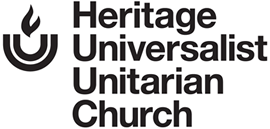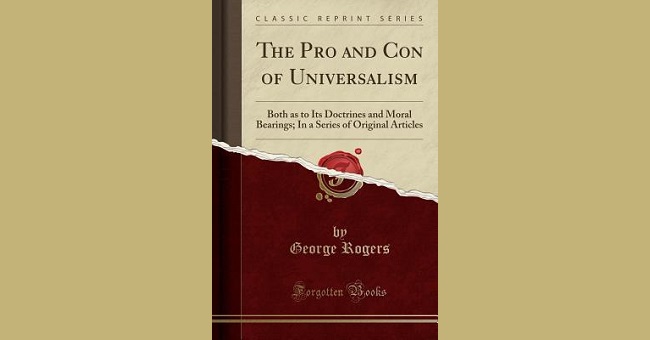by Mike Roberts, Church Historian
In last month’s article we traced the history of our church up through the year 1832 – and left the congregation hanging, in disarray. Cincinnati Universalists were under attack from other Christian churches, especially the nearby Presbyterians; the city had been struck by a number of disasters, and our brethren were forced to sell their small church building and hold their services in a local school.
It was at this time that a remarkable man entered the lives of our Universalist ancestors. His name was George Rogers. Rogers was born on the shores of the Thames River in England and came to this country at the age of 2. Shortly after the family’s arrival in Philadelphia, both parents died. George, who was being raised in the Episcopalian faith, was placed in an orphanage run by the church. He remained there until age 9, when at last he was adopted by distant relatives who happened to be Methodists.
As a young adult Rogers embraced the idea of becoming a Methodist minister. During that short professional association, he repeatedly questioned the binding faith of more traditional Christianity. The experience tested his ability to reason and to interpret the faith in what he determined to be a more logical manner. He drifted toward, and eventually adopted, Universalism as his calling. Rogers was formally brought into the fold in 1831 in Chenango, New York.
Rogers never was comfortable as a congregational minister, however, and instead became one of a growing number of preachers who travelled the countryside to preach their faith. His only pay was room and board, wherever he was welcomed. Rogers took no salary. He wandered westward through Pennsylvania, and from Pittsburgh preached his way down the Ohio River, eventually reaching Cincinnati. It was here that Rogers met Enoch Singer, an original member of our church who persuaded him to take the pulpit of the First Universalist Society of Cincinnati.
At the time, Rogers recorded that the church was not meeting in a stable (as had been reported), but later in its history the old schoolhouse located at Sixth Street and Vine where our ancestors met was used for that purpose. Regardless, Rogers described the building as “requiring no vast multitude to be filled.” Under his leadership, the church soon acquired, for the “fair price” of $100 per found foot, a building on Walnut near Third Street known as the Mechanics Institute. The purchase put the church in dire financial straits, and Rogers soon realized there was no way the group could pay his salary. To subsist, he sold his horse and even his precious books, but in the end had to resign his pastorate after only a year in the pulpit.
His influence did not wane, however, as he became the leading editor and contributor to the The Sentinal, the local Universalist newspaper. His probing thoughts and open mind contributed strongly to the development of liberal religious thought in Cincinnati and the West for the next dozen years.
Yet Rogers’ true passion was on the road. He frequently left the city on long preaching excursions, mostly into the deep South. By 1842, he had developed severe arthritis, though he continued to travel the countryside to speak to whomever would listen about the freedom of liberal religious practice. It is believed that Rogers ultimately preached in all but three states of the Union during the 1840s. In his short life, Rogers also compiled a new Universalist hymnal, which became widely used in Universalist churches across America. Sadly, Rogers died in 1846 at the age of 42.
Next month: Our story continues…
Image: Book “The Pro and Con of Universalism” by Rev. George Rogers.
Image source: Goodreads.

